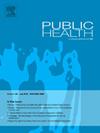真实和虚拟绿色空间的比较分析:感知恢复性和心理健康效应
IF 3.2
3区 医学
Q1 PUBLIC, ENVIRONMENTAL & OCCUPATIONAL HEALTH
引用次数: 0
摘要
目的本研究旨在比较真实和虚拟绿色空间的心理影响,并确定有助于大学生感知恢复和情绪变化的关键环境特征。研究设计采用混合方法交叉实验设计,对真实校园绿地、虚拟校园绿地和虚拟森林绿地三种类型的绿地进行心理评价。方法35名大学生按随机顺序参加三次20分钟的绿地暴露,间隔一周。在每次治疗前后分别用知觉恢复量表(PRS)和情绪状态量表(POMS)评估心理反应。暴露后进行半结构化访谈,并进行词频分析以确定与放松或紧张相关的环境特征。结果与虚拟校园绿地相比,真实校园和虚拟森林绿地在所有四个PRS维度上的得分都更高。真实的校园绿地也导致消极情绪状态的减少和积极情绪(活力)的增加,表现优于两种虚拟环境。词频分析显示,植物和水景是最常被提及的恢复因素,而车辆和噪音则经常被提及为非恢复因素。在虚拟环境中,不舒服的感觉与他人的存在和独处都有联系,这突出了感知安全的作用。真实的绿色空间提供了最全面的心理益处,而沉浸式虚拟森林可以作为缓解负面情绪状态的部分替代方案。这些发现为恢复性环境的设计提供了信息,并强调了在现实和虚拟环境中支持心理健康的关键特征。本文章由计算机程序翻译,如有差异,请以英文原文为准。
Comparative analysis of real and virtual greenspaces: Perceived restorativeness and psychological health effects
Objectives
This study aimed to compare the psychological effects of real and virtual greenspaces and identify key environmental features that contribute to perceived restorativeness and mood changes in university students.
Study design
A mixed-methods crossover experimental design was used to evaluate psychological responses to three types of greenspaces: real campus greenspaces, virtual campus greenspaces, and virtual forest greenspaces.
Methods
Thirty-five college students participated in three 20-min greenspace exposures, spaced one week apart in randomized order. Psychological responses were assessed using the Perceived Restorativeness Scale (PRS) and Profile of Mood States (POMS) before and after each session. Semi-structured interviews were conducted post-exposure, and a word frequency analysis was performed to identify environmental features associated with relaxation or tension.
Results
Both real campus and virtual forest greenspaces scored higher across all four PRS dimensions compared to virtual campus greenspaces. Real campus greenspaces also resulted in reductions in negative mood states and an increase in positive mood (vigor), outperforming both virtual conditions. Word frequency analysis revealed plants and water features as the most cited restorative elements, while vehicles and noise were frequently mentioned as non-restorative. Feelings of discomfort were linked to both the presence of others and being alone in virtual environments, highlighting the role of perceived safety.
Conclusions
Real greenspaces offer the most comprehensive psychological benefits, while immersive virtual forests may serve as partial alternatives by alleviating negative mood states. These findings inform the design of restorative environments and highlight key features that support mental well-being in both real and virtual contexts.
求助全文
通过发布文献求助,成功后即可免费获取论文全文。
去求助
来源期刊

Public Health
医学-公共卫生、环境卫生与职业卫生
CiteScore
7.60
自引率
0.00%
发文量
280
审稿时长
37 days
期刊介绍:
Public Health is an international, multidisciplinary peer-reviewed journal. It publishes original papers, reviews and short reports on all aspects of the science, philosophy, and practice of public health.
 求助内容:
求助内容: 应助结果提醒方式:
应助结果提醒方式:


